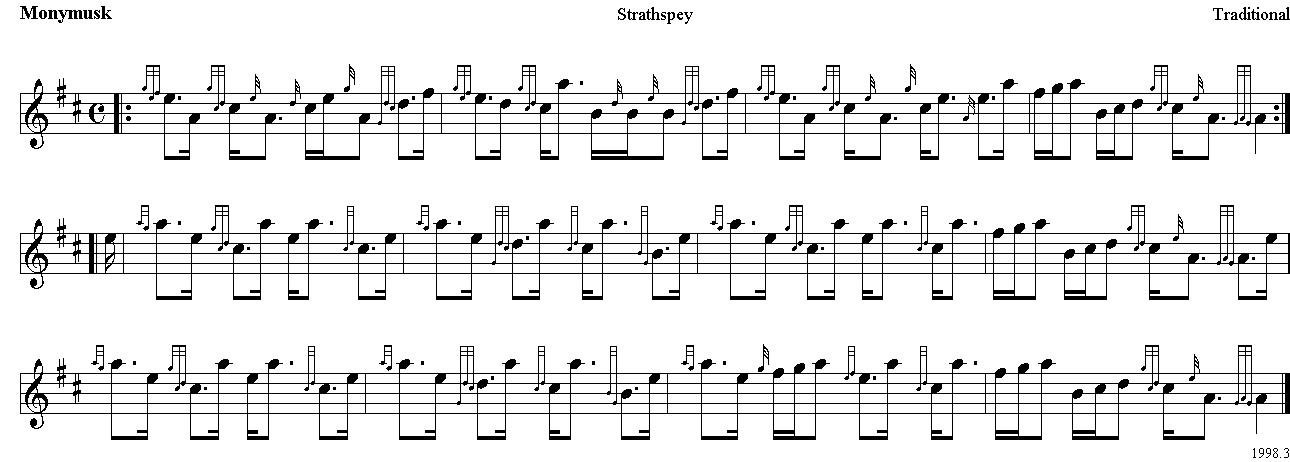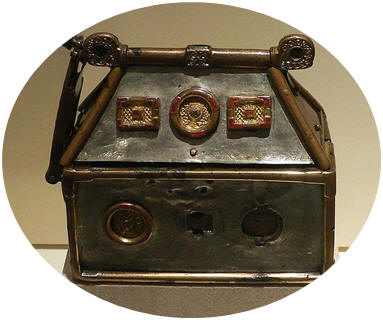Monymusk
is a planned village in
The Monymusk Reliquary (shown above) is an eighth century Scottish reliquary made of wood and metal characterized by a Hiberno-Saxon fusion of Gaelic and Pictish design and Anglo-Saxon metalworking, probably by Ionan monks. Believed to be the Brecbennoch of St. Columba, a sacred battle ensign of the Scottish army, it was used for saintly assistance by Scots in battle. It was significant because it was said to have contained a bone, or bones, of Columba.
It may
have been handed to the
abbot of Arbroath Abbey
during the reign of
William I (r. 1165 -
1214), who in turn
passed it to someone
else's care at Forglen.
The custodian was
charged with the care of
the reliquary, so that
it could be used for
saintly assistance by
the Scots in battle. It
was carried by the
Gaelic army who were
victorious against the
army of king Edward II
of



